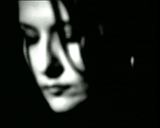
 Author of all texts
about mythology on
these web-pages is
Lidija Bajuk:
Author of all texts
about mythology on
these web-pages is
Lidija Bajuk:
|
lidija.bajuk@posluh.hr
scena.hgu.hr/lidija-bajuk/
- The Sky
- The Mountain
2. PERUNIKA
- Leluya
- Ball lightning
3. AQUARIUS
- Candlemen
WATER MAID
- Fairies
- Witches
4. DRAGON
- Water
SNAKE
- Bogorodica
(Rainbow)
5. GREEN GEORGE
- The Moon
- Corn Spirit
6. LEPA MARA
- Hair
- Embroidery
7. GRABANCIJAŠ
- Light
8. PESJANEK
- Forest
9. LITTLE RED HAT
(DWARF)
- The Cap, Little Hat
10. STRAHE & MRAKI
(GIANTS)
|
GREEN GEORGE
(ZELENI JURAJ, SVETI DJURADJ, SVETI
ĐURO, SVETI JURAJ (St. George), ZELENI ĐURAĐ,
ZELENI ĐURO,ZELENI JURI, ZELENJAK (Green George))
|
|
The Green George danced several different dances and all of them had different symbolical meaning. He jumped high up in the air so the crops would grow high, he spun around in order to chase the demons away and he shook and waved his arms thus immitating and calling rain. Sometimes the others from the procession threw water on him or threw him or his maypole in water. The procession visited every house and presented it with a twig from George's basket. It was supposed to protect the household from storm, illness and evil forces and transfer the life-giving forces of spring on the people in the house. The Green Goerge was also the personification of spring and well-being and therefore it was said that he unlocks the Earth and frees the dew which makes plants grow and fights the winter demon wrapped in straw. He punishes those who do not honour him with flowers and processions. The described ceremony is actually an old Slavic spring festival called ''Jarilo''. In Croatian and Slovenian the word ''jara'' means ''overflowing'' and in Bulgarian the word ''jarilo'' means any nature festival. It was actually a celebration of the young birch tree. On this day people went on pilgrimages to holy mountains, danced, etc. The Russians used to have wild celebrations and burned or buried a straw puppet with a large penis. In Belarus only girls celebrated this festival. They put a white cape over one of the girls and sat her on a white horse, which was also one of the symbols of St. George. The horse was tied to a pole and they danced around them until dawn, wearing flower wreaths on their heads. This festival is similar to the Christain holiday of Ascension, called ''Spasovo'' in Croatian, which is celebrated at different times among the Slavic nations depending on the climate of their country. Sometimes they celebrate it at the beginning of April, sometimes at the end of June or at the beginning of July. But, they always celebrate it in similar ways - they walk around the village or in the nature, that is have ceremonial processions of the, so called, crusaders. The central character of these festivities is Jarilo (The Belorussians call ''Spasovo'', the Ascension, ''Jarilo'' even today). Jarilo is the same as old George. In the Croatian folk tradition the day of the Summer, i.e. Fat Goerge is celebrated during the harvest, on the 31st August. After the harvest the Fat George must die. In other words the life of George, the god of vegetation follows the life of the grain crops and the harvest and the year cycle. His name is a combination of the words ''ju'' and ''raj'' which mean ''young'' and ''heaven'' and signify a land rich with grain where the souls of the dead live. In a Belarus folk song, ''Rajak'' represents the last sheaf in the field that has come alive. In the Croatian kajkavian folk legend George is a hunter (''jager''), wearing a green raincoat, blue trousers and yellow boots (the Indoeuropean word ''ghel'' means ''yellow or green''). He carries a sabre or a gun and has a hat made of marten fur on his head, decorated with a twig and often a coockoo bird sitting on the twig. The marten and the coockoo bird are symbols of Goerge's bride, his unrecognized twin sister. A folk tale from Bilogora in Croatia tells of ''jagari'', little foresters, that is little or night hunters similar in some traits to dwarves. They are weak like the early spring. The hunt that the mythical Goerge goes to has ritual and symbolical meaning. In the first case this royal art shows his youth, strength, quickness and bravery. It enables him to catch sacrificial animals and food used for communion. He also chases lethal evil influences from future arable land. (The Chaos is represented by wild beasts.) It also identifies him with the spiritual search through the images of love which plays, hunts, blinds and burns. The wedding of the vegetation god comes after St. George's day. The Croats celebrated it on St. John's day (midsummer day). Midsummer festivities are similar to harvest festivities and the festivities that celebrate the old Jarilo, so it is possible that the spring George from Croatian mythology transforms into John of the summer, one of his aspects of the year. That is why people in the old days imagined old deities to have more than one head. It is also possible that one of his young brothers takes his place in the vegetation cycle. The folk legend says that there were nine godly children - the twins George and Mary (''Lepa Mara'', the beautiful Mary) and seven of their brothers. The vegetation god represents the moon and is therefore changeable like the moon. Because of his infidelity, his wife's family will kill him. To be unfaithful means to change identity. The housmaster, who represents the Thundermaker Perun, burns his home in the forest, that is the yule log or a stump, straw or straw wreath on Christmas Eve in the fireplace. The same happens on Shrove Tuesday when a straw puppet is burned. This is the way a father sacrifices his son after which the new year and the new cycle can begin. If the Thundermaker separates himself from his dark side as his dark brother Veles, he returns his son to his brother who raised him in the underground world of the dead. The winter time of the vegetation period represents this underworld of the dead. |